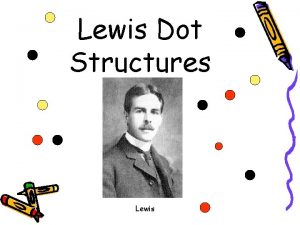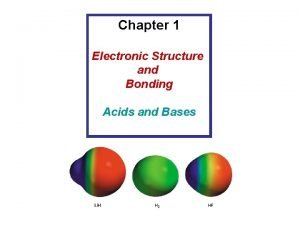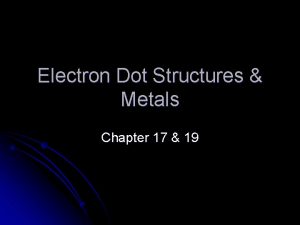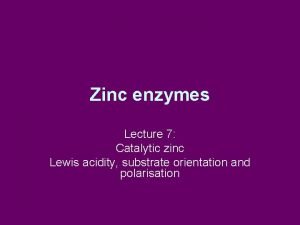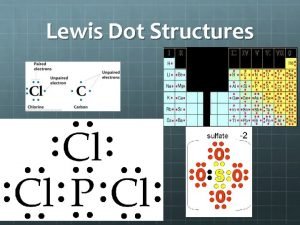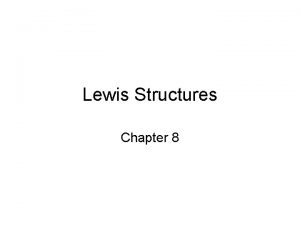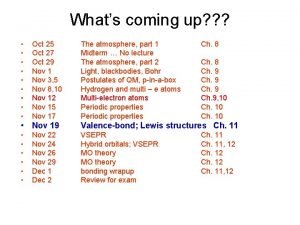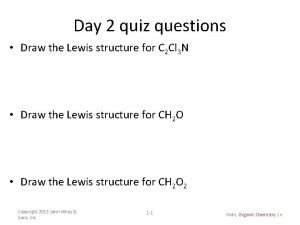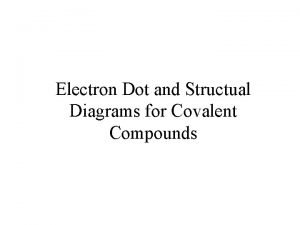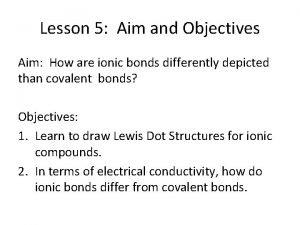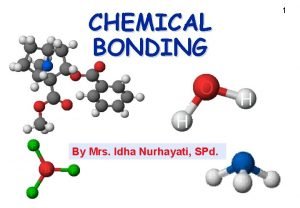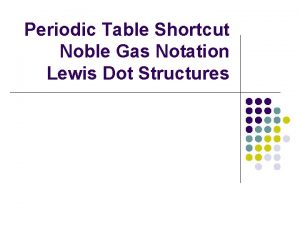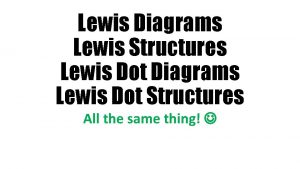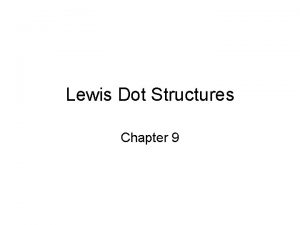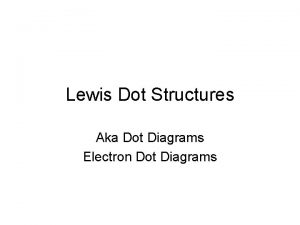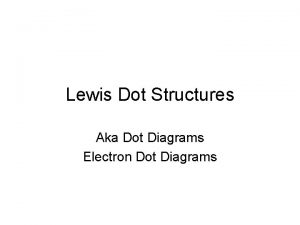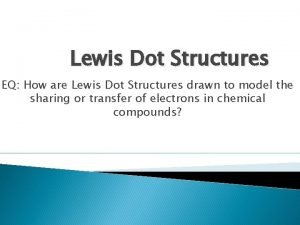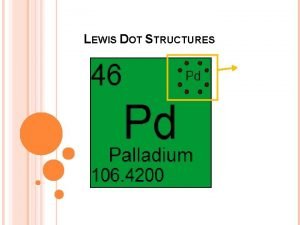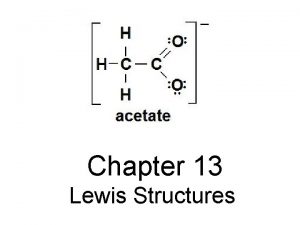Lewis Dot Structures Lewis structures show presence of


















- Slides: 18

Lewis Dot Structures

• Lewis structures show presence of all valence electrons in a compound. • If ionic, metallic or covalently bonded compounds may all be represented. • This unit concentrates on covalently bonded molecular compounds but ionic compound representation is required.

• Ionic transfer of v e- • Metallic free v e-

Another ionic compound One e- from Ca atom may be given to each fluorine atom to satisfy octet rule

Lewis Structure for Ca. F 2

Your Turn • Sodium Carbonate • Magnesium Chloride

• Covalent compounds and polyatomic ions can be described by • Molecular formula: kind/types numbers of atoms but give no information of bonds connectivity

• Structural formula: depicts arrangement of atoms in space But gives no information regarding arrangement of valence electrons

Lewis Structures Does … • Shows valence e- arrangement • Lewis structures written for molecules that obey Octet Rule! • (exceptions: deficiency, extended and odd#)

Lewis Dot Diagram Rule 1: • • Count valence e- of each atom Add totals for all atoms Make adjustment for charge if any (-1 charge add e- +2 charge 2 less e-)

Rule 2: • Arrange atoms in the diagram as follows: • Choose least EN atom as central atom- usually atom closest to left side of PT or largest • Arrange other atoms around central atom (CA) • Hydrogen can only form one bond- never CA • Carbon has 4 single bonds except in CO and CN (Has 3 bonds and unshared v e- pair)

Rule 2 continued… Arrange other atoms around central atom (CA) Hydrogen can only have one bond, why? Carbon has 4 single bonds except CO and CN-1

Your Turn… Calculate val e- and organize CA and outside atoms in the following: Carbon dioxide Ammonia Carbon tetrachloride Methane Carbon ion Ammonium ion

Rule 3 • Place vale e- around CA as follow: • Connect outer atoms to CA with single covalent bond- each bond takes 2 e • Calculate # of remaining val e • Fill octets of outer atoms • Place any remaining e- on CA


Rule 4 • Check CA if Octet Rule satisfied • IF NOT- make multiple bonds double or triple • (this done by moving unshared e- pair on outer atom to CA • ONLY FEW ELEMENTS CAPABLE OF FORMING MULTIPLE BONDS: C N O P S • AND RARE-CHLORINE

Your Turn. . Return to these diagrams Add val e- Make Lewis Structures for each Carbon dioxide Ammonia Carbon tetrachloride Methane Carbon ion Ammonium ion

EXCEPTIONS TO OCTET RULE?
 Id root
Id root Lewis dot diagram
Lewis dot diagram How to draw a bohr model for helium
How to draw a bohr model for helium 1-5 solving equations and inequalities by graphing
1-5 solving equations and inequalities by graphing Dot net vs dot com
Dot net vs dot com Methyl fluoride lewis structure
Methyl fluoride lewis structure Lewis dot diagram for gold
Lewis dot diagram for gold Zinc lewis dot structure
Zinc lewis dot structure Lewis dot structure of ch3i
Lewis dot structure of ch3i Journey into discipleship
Journey into discipleship Potassium bohr diagram
Potassium bohr diagram Co lewis structure
Co lewis structure Hnc lewis dot structure
Hnc lewis dot structure Lewis structure quiz
Lewis structure quiz Lewis dot structure of li
Lewis dot structure of li Dot diagrams
Dot diagrams Lewis dot structure ionic vs covalent
Lewis dot structure ionic vs covalent Cocaine lewis dot structure
Cocaine lewis dot structure Francium lewis dot structure
Francium lewis dot structure

